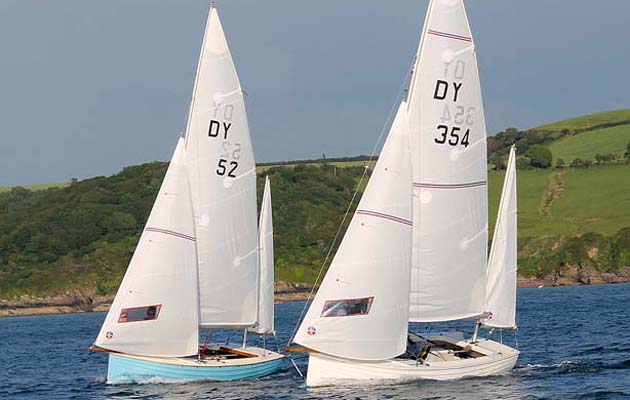The Devon Yawl is based on small, half-decked fishing boats working out of Salcombe harbour, says David Henshall
It is something of a paradox that one of the most modern boats in our Local Boats series was simultaneously one of the oldest. The origins of the Devon Yawl yacht design date back over 200 years to the small, half-decked fishing boats which worked out of the Salcombe estuary. These boats had evolved to deal with the specific conditions in the area – strong currents and a narrow channel out to sea demanded that the boats had an ability to work to windward.
They also had to deal with a wide range of sea states, from the short chop within the harbour to the rolling seas found in the open waters of the channel beyond the bar. The hulls needed to be stable enough to work in safety even if the boats were sailed short-handed.
A key feature of these working boats was a very flexible yawl rig, which provided the power to sail out over the tides yet could be easily managed under jib and mizzen once at the fishing grounds. The hulls, which tended to be 14-16ft in length, were straight-stemmed with full powerful sections to allow for good sea-keeping and load-carrying.
While the design barely changed, their use altered rapidly over a century. As engine-powered fishing boats became larger, the yawls were relegated to leisure and racing. There was nothing in the way of a formalised design, so it was left to the skill of each boatbuilder to optimise the performance, none more famous than Salcombe boatbuilder and sailor Alec Stone, who would develop a new breed of yawls that outperformed all previous boats.
In the early 1960s, the first moves were made to create an umbrella association for the ‘Salcombe Yawls’, and from the outset some people argued that the future for the boats would be best served by the development of a one-design hull to be built in glassfibre. So, a local yawl sailor, Michael Quick, drew up a very fair set of lines for a ‘middle of the road’ hull which drew on the best features of the current boats.
From these plans a set of moulds was created and the first boat, which would be given the Salcombe number Y81, was built. All the features of the Salcombe Yawl were incorporated, from the classic yawl rig to the attractive hull form, complete with clinker lines moulded into the glassfibre hull.
In contrast, a new class emerged as a result of the new glassfibre hull. Devon Yawls were a strict one-design, with glassfibre hulls and lightweight aluminium spars. They were also quickly recognised as being a cost-effective compromise between the aesthetically appealing older Salcombe Yawls and the easy-to-maintain new version.
Yet they also quickly became known as safe, reliable designs. In bad weather the boat still sailed excellently under jib and mizzen thanks the 80kg (175lb) centreboard and 65kg (144lb) of internal ballast. In kinder conditions, the generous 167ft2 sail area ensured the sort of sparkling performance to provide exciting racing.
With plenty of built-in stowage the Devon Yawl, also proved itself an excellent cruising dinghy. Crews sailed offshore in complete confidence – the ballasted hull very rarely capsized and even if it was swamped there was more than enough built-in buoyancy to enable the situation to be recovered. Aided by the clinker mouldings and the fact that the boat was never intended to be a lightweight flyer, the hull lay-up was robust. This also means that the Devon Yawls last a long time, so maintain their value on the second-hand market. Nevertheless, quality boats are still available at less than £5,000.




